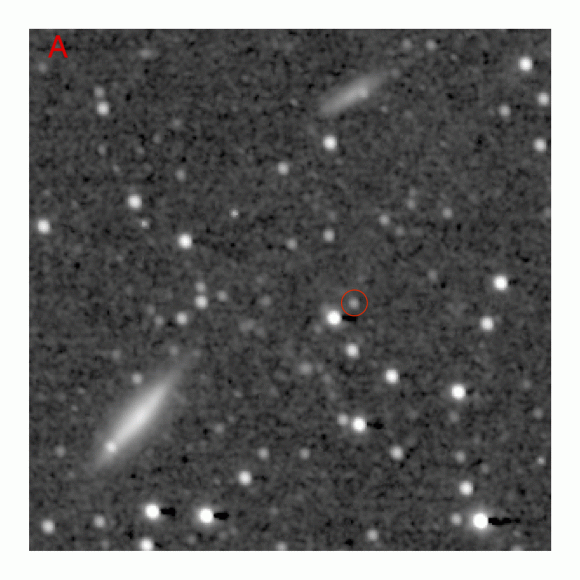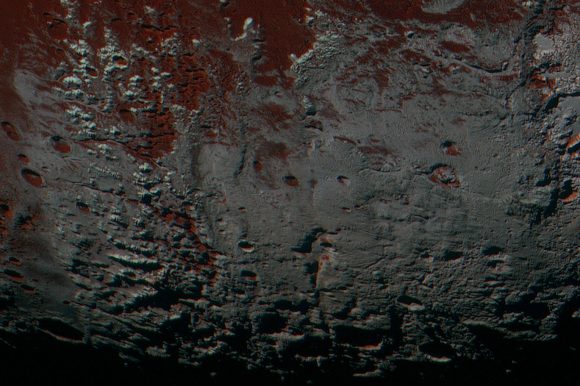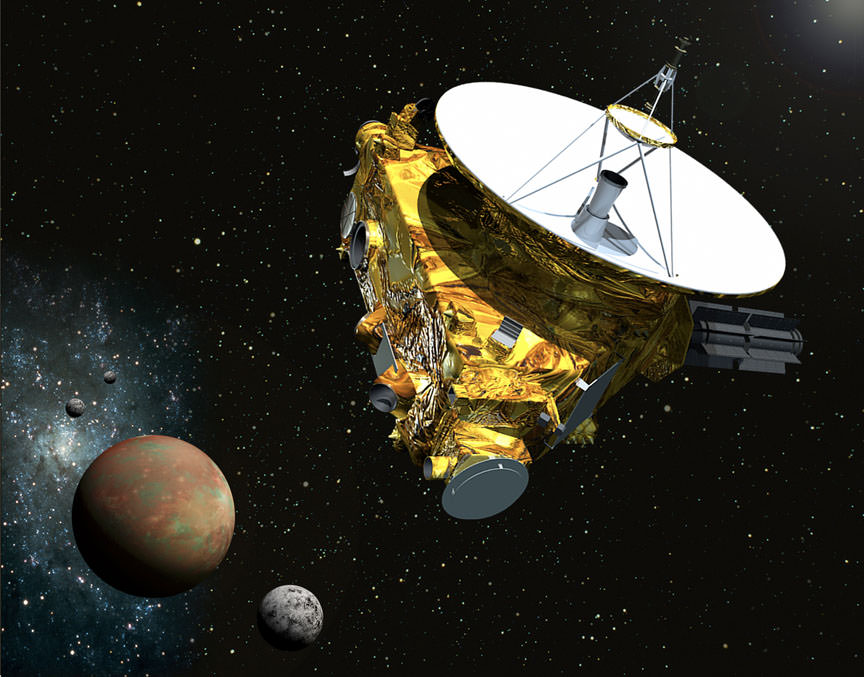Now more than a year after its historic flyby of Pluto, the New Horizons spacecraft continues to speed through the Kuiper Belt. It’s currently on a beeline towards its next target of exploration, a KBO called 2014 MU69. But during its travels, New Horizons spotted another KBO, one of Pluto’s pals, Quaoar.

When these images were taken (in July 2016), Quaoar was approximately 4 billion miles (6.4 billion kilometers) from the Sun and 1.3 billion miles (2.1 billion kilometers) from New Horizons.
The animated sequence, above, (click the image if it isn’t animating in your browser) shows composite images taken by New Horizons’ Long Range Reconnaissance Imager (LORRI) at four different times over July 13-14: “A” on July 13 at 02:00 Universal Time; “B” on July 13 at 04:08 UT; “C” on July 14 at 00:06 UT; and “D” on July 14 at 02:18 UT. The New Horizons team explained that each composite includes 24 individual LORRI images, providing a total exposure time of 239 seconds and making the faint object easier to see.
Quaoar ( pronounced like “Kwa-war”) is about 690 miles or 1,100 kilometers in diameter, about half the size of Pluto. It was discovered on June 4, 2002 by astronomers Mike Brown and Chad Trujillo from Caltech, and at the time of its discovery, it was the largest object found in the Solar System since the discovery of Pluto. Quaoar’s discovery was one of the things that spurred the discussion of whether Pluto should continue to be classified as a planet or not.
But Quaoar is an interesting object in its own right and the New Horizons team said the oblique views of it that New Horizons can see – where LORRI sees only a portion of Quaoar’s illuminated surface — is very different from the nearly fully illuminated view of it that is visible from Earth. Comparing Quaoar from the two very different perspectives gives mission scientists a valuable opportunity to study the light-scattering properties of Quaoar’s surface.
If you’re thinking, “Why don’t we send a mission to Quaoar, or Sedna or Eris?” you aren’t alone. New Horizons team member Alex Parker has obviously been thinking about it. Parker tweeted that for a New Horizons-like mission it would take about 13 and a half years to reach Quaoar if it could be launched in December 2016. “Otherwise, we have to wait another 11 years for the next Jupiter assist window,” he said.
Um, NASA, can we put this on the schedule for 2027?
In the meantime, the images and data that New Horizons gathered during the Pluto flyby in July 2015 are still trickling back to Earth. The image below is a stunning view of Pluto’s methane snowcaps, visible at the terminator, showing the region north of Pluto’s dark equatorial band informally named Cthulhu Regio, and southwest of the vast nitrogen ice plains informally named Sputnik Planitia. This image was taken about 45 minutes before New Horizons’ closest approach to Pluto on July 14, 2015.

See all of the latest photos sent back from our robot in the outer reaches of our Solar System at the New Horizons website.


Light takes hours to reach us
from our farthest probe
That make me wonder
how far we can go?
Side note: Those are galaxies in the background, right?
Got it in one, Aqua. From the New Horizons page:
“In addition to many background stars, two far away galaxies – IC 1048 and UGC 09485, each about 370 billion times farther from New Horizons than Quaoar – are also visible in these images.”
[ http://pluto.jhuapl.edu/Multimedia/Science-Photos/image.php?gallery_id=2&image_id=459 ]
Missions, I’d vote for Haumea. Interesting paper http://arc.aiaa.org/doi/pdf/10.2514/6.2014-1639 . Some good launch windows in the next decade. They propose dumping a swarm of nano-satellites instead of braking the mothership. (Note to self: invent swarm of nano-satellites.)